Lee Kuan Yew and the Making of Changi (The World's Best Airport)
The story behind Changi Airport, which Singapore's founding father Lee Kuan Yew called one of the country's best investments ever.
Thanks for subscribing to SatPost.
I did a Southeast Asia trip over the summer to Vietnam, Singapore and the Philippines. Have a few drafts of trip observations and am sharing this first one on Singapore Changi’s Airport aka “The Best Airport In The World”.
Also this week:
Nvidia *Intends* To Invest $100B Into OpenAI
iPods, Yondr and Classroom Smartphone Bans
TikTok Sold For $14B (Maybe)
…and them wild posts (including T-Pain)
Singapore’s Changi Airport is often cited as the best airport in the world.
I know this because I went there in July and when I Googled anything related to Singapore (“best hawker stall”, “least busy time to visit Gardens By The Bay” or “smartest strategy to avoid buying $500 worth of merch while at Minion Land in Universal Studios”), I was two clicks away from a travel blog that explained why Changi Airport was the best airport in the world.
Incredible architecture. An abundance of shops and food options. So much passport-less entry!
The last time I was in “The Garden City” was over a decade ago and Changi already had a sterling reputation at the time. In the intervening years, Changi levelled up by adding “Jewel” (a ~$2B entertainment, retail and greenhouse complex).
Designed by famed starchitect Moshe Safdie — who also did the incredibly baller Marina Bay Sands — the 10-storey Jewel structure (totalling 1,461,000 sqft) is connected to Changi’s four terminals and accessible by visiting the airport, whether or not they are actually flying.
Living up to Singapore’s reputation as a green oasis, the inside of Jewel has 100,000 shrubs and 3,000 trees…and the world’s largest indoor waterfall (because if you’re going to YOLO, you should really YOLO).
To be honest, I was a bit wary of the hype and Jewel wasn’t even on our original trip itinerary.
But the whole point of Jewel is that the gorgeous structure is unmissable by anyone flying in and out of Singapore. The time commitment to check it out is minimal.
Sure enough, we had a few hours on departure day. We also really had to go because my son is in his Pokémon card-collecting phase and a Singaporean cab driver rugged me by telling us that there was a Pokémon store on the 4th floor of Jewel.
Aside from getting bodied by Pikachu and Charizard card packs, here is my review of Jewel: IT IS VERY IMPRESSIVE! YOU HAVE TO CHECK IT OUT IF YOU EVER GO TO SINGAPORE!
I instantly went from “why would anyone need a 131-ft indoor waterfall” to “why doesn’t every airport have a 131-ft indoor waterfall?”.
Look at this thing. A giant waterfall. Indoors.
Unveiled in 2019, Jewel has kept Changi at the top of the airport game.
To wit: global airline rating agency Skytrax has been ranking airports since 2000…and Changi has taken the top spot a record 13 times, including post-Jewel years of 2019, 2020, 2023 and 2024.
In NBA terms, Changi Airport adding Jewel was the equivalent of the 2016 Golden State Warriors adding Kevin Durant. Just complete and utter excess that guaranteed victory.
My feeling of awe is the exact reaction Singapore’s founding father Lee Kuan Yew (LKY) wanted to elicit when people arrived at the city-state’s main passenger airport.
As Singapore’s first Prime Minister from 1959 to 1990, LKY made a series of difficult decisions to modernize a third-world Southeast Asian island of 2 million people (now, 6 million people). His book From Third World To First — which was published in 2000 (LKY passed away in 2015) — details the myriad obstacles he faced to build a nation.
Befitting LKY’s focus on practicality, the main challenges are detailed right there in the chapter titles (and it turns out that the airport was among his most expensive bets).
I revisited the book during my recent Southeast Asia travels and two sections — Chapter 4 (“Surviving Without A Hinterland) and Chapter 15 (“Conductor of an Orchestra”) — had notable insights on Singapore’s airport strategy.
Ultimately, LKY wanted tourists, politicians and business folk to understand what Singapore had to offer the second they stepped off the airplane.
It’s for this reason that LKY called Changi Airport “the best S$1.5 billion investment [Singapore] ever made.”
The practical decisions that Singapore made with its airport are emblematic of the practical mindset that saw the country’s per capita GDP (inflation-adjusted USD) rise from ~$400 in 1959 to $12,000 in 1990 under LKY as Prime Minister. Now, in 2025, Singapore’s GDP per capita is the highest in Asia and 8th highest in the world at $91,000.
Let’s dive into the backstory including:
Surviving Without a Hinterland
Making a Huge Bet On Changi
The Future of Changi (and Singapore)
Surviving Without a Hinterland
Changi Airport first became operational in 1981.
But we’ll start the story by rewinding back to 1959. That year, Singapore transitioned from a British colony to an independent state and Lee Kuan Yew became its first prime minister leading the Political Action Party (PAP) at the age of 35 (previously, LKY survived the Japanese occupation of Singapore and studied at the London School of Economics and law at Cambridge before making a name for himself as a barrister for trade and labor unions in Singapore).
As an independent state under this arrangement, Singapore achieved full internal self-governance but its defence and foreign policy was still under British control.
In 1963, Singapore and two other British colonies (Sarawak and North Borneo, which was renamed Sabah) joined the Federation of Malaya to form Malaysia. For LKY, a key benefit of joining Malaysia was that it provided a “hinterland” of natural resources and inhabitable space.
Singapore would leave the union in 1965 due to a combination of political, economic, religious and racial tensions (including violent riots among the large Chinese and Malay ethnic groups).
After exiting the federation, Singapore lost access to a hinterland and LKY said the city-state now had “a heart without a body.”
To be sure, Singapore did still have one of the most strategic ports in the world. It was the reason why Sir Stamford Raffles — in 1819 — had set up the first British trading port on the small island (today, Singapore is ~730km², which is about the size of New York City’s land area at 780km²).
By establishing a presence in the region in the early-19th century, the British were able to conduct trade without having to pay a tax to the Dutch in the Dutch East Indies aka modern-day Indonesia.
Singapore’s location remains important as ever. It is at the southern point of the Strait of Malacca, which connects the Indian Ocean and Pacific Ocean. About one-third of global trade passes through the Strait each year.
However, in the late-1960s, the long-term value of Britain’s port in Singapore was far from a sure thing.
After World War II, the British knew a wave of decolonization was coming but still wanted to maintain its global maritime network. That plan was effectively over after the Suez Canal crisis of 1956. The Egyptians nationalized the Canal, which led to the withdrawal of the French and British from the country (ending Britain’s 74-year presence inside Egypt).
The die was cast, and it was inevitable that Britain would leave Singapore. Successive British governments hung on as long as possible but eventually couldn’t afford to maintain the Southeast Asian naval base. By the time the British left in 1971, its military spending was 1/5th of Singapore’s GDP and directly or indirectly employed 70,000 people.
The British exit was a blow to Singapore’s economy but LKY knew there was a way forward.
From LKY’s time living in England, he had studied the economic benefits of operating within the British trading system. It would be his melding of those Western lessons with his Asian-Confucian background that ensured Singapore could navigate the world in second half of 20th century (former British foreign secretary George Brown once remarked that LKY — his full birth name was Harry Lee Kuan Yew — was “the best bloody Englishman east of Suez”).
In the first decade of his leadership, one of the most important jobs for LKY was finding a way to replace the anchor British employer. Singapore would turn Britain’s old naval port into one of the world’s most productive trading ports, but that outcome was many decades into the future.
Singapore’s population of 2 million faced double-digit unemployment and even a fully-operating port business couldn’t soak up the labor supply, per LKY:
“After grappling with the problem of unemployment for years since we first took office in 1959, all of us in the cabinet knew that the only way to survive was to industrialize. We had reached the limits of our entrepot trade.”
A low-hanging investment was the Pokémon card-trading card tourism industry:
“One of our soft drink manufacturers suggested to me what we promote tourism; it was labour-intensive, needing cooks, maids, waiters, laundrymen, drycleaners, tour guides, drivers and makers of souvenir handicraft. Best of all, it required little capital.
We formed the Singapore Tourism Promotion Board and appointed film magnate Runme Shaw of Shaw Brothers, as chairman. He was the right man for the job. He was in the film and entertainment industry and knew all about the packaging and selling of sights and sounds, and how to keep visitors amused while in a strange country.
He had a logo designed (the “Merlion”) a lion with mermaid’s tail. I launched the logo erected in a concrete at the mouth of the Singapore River. I did little else for the tourist industry except speak at the occasional convention of visiting professionals or business people. To my relief, it did create many jobs and put coins into many empty pockets. It reduced but did not solve the unemployment problems.” (p. 50)
If you’ve ever been to Singapore, you know how hard that Merlion is repped and it’s an example of LKY’s belief that the city-state “had a real-life problem to solve and could not afford to be con-scribed by any theory or dogma.”
Some shuddered at Singapore going Walt Disney. Others questioned the wisdom of LKY’s plan to turn a jungle terrain full of malarial swamps into a first-world travel destination.
But it was a playable hand considering Singapore’s capital and labor requirements.
LKY was just uber-uber practical and the Merlion fit the bill (speaking of pragmatism: LKY said that the air conditioner was the greatest invention of the 20th century because it allowed the citizens of the very hot and humid city-state to actually work in an office and be way more productive).
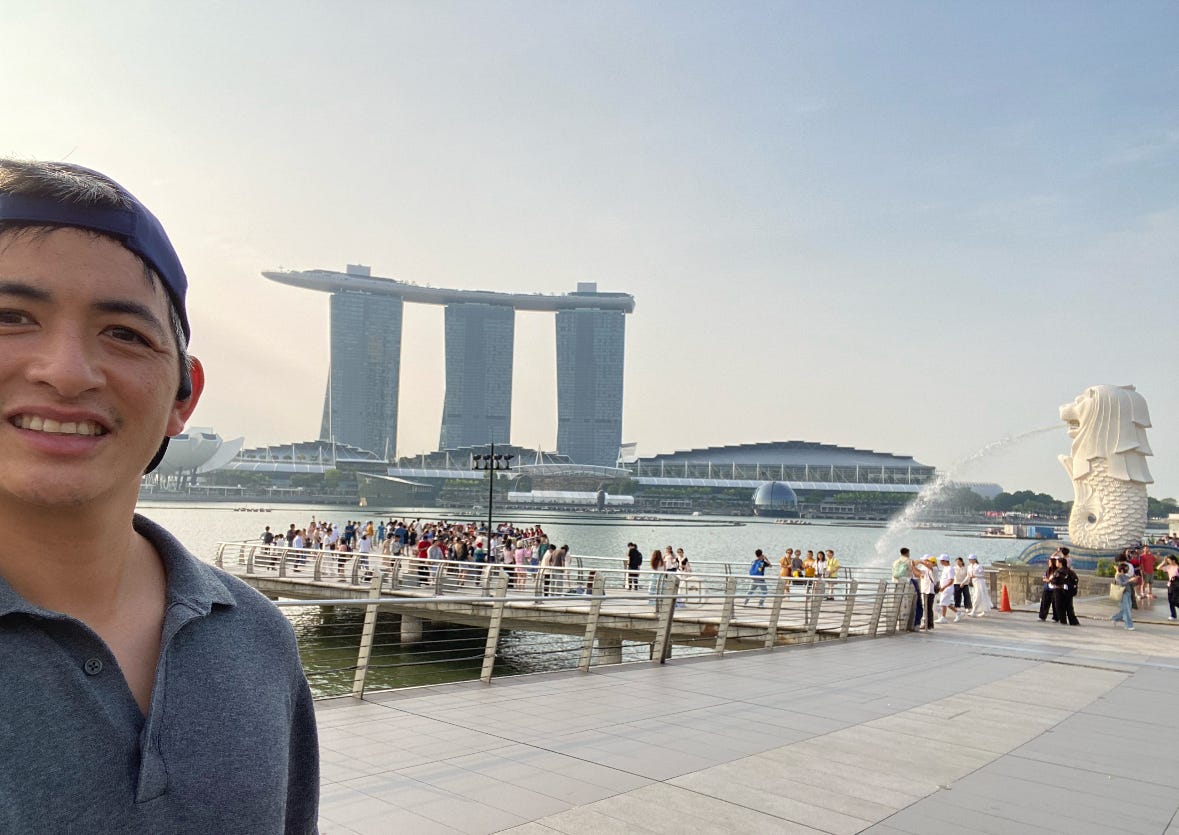
To pick up more of the labor slack, LKY also went after the tried-and-true development path of manufacturing.
Singapore’s play to attract investors was to offer low taxes, a predictable business environment and streamlined paperwork. It did so by establishing an Economic Development Board (EDB):
“[The EDB was a] one-stop agency so that an investor need not deal with a large number of departments and agencies. This agency would sort out all an investor’s requirements whether relating to land, power, water or environmental or work safety.”
LKY lated ensured that the EBD and other government agencies were staffed by Singapore’s best talent by offering public-sector wages on par with comparable private-sector roles.
Another key decision was that LKY had made English the country’s administrative language, which incentivized every citizen to learn it in addition to their mother tongue. This was not an easy choice. The ethnic makeup of Singapore was roughly 75% Chinese, 15% Malay and 10% Indian. LKY was ethnically Chinese and faced immense pressure to make a Chinese dialect the city-state’s main language.
His decision to emphasize English in Singapore ensured that the workforce could interface with the multi-national corporations (MNCs) while also allowing the different ethnic groups to maintain their specific cultures.
Soon, Singapore took on foreign manufacturing contracts for car parts, refrigerators, air conditioners, radios, television sets, toys, textiles and tape recorders (it had previously tried creating a domestic glass manufacturer but didn’t have a good supply of silica and shuttered the project…that non-hinterland life is hard).
The next rung of the manufacturing ladder was American electronics, disc drives and semiconductor chips. Many other developing-nation leaders believed this type of investment from MNCs was only inviting “neocolonialist exploiters” who wanted cheap land, labour or resources.
LKY was non-dogmatic.
Could the investment help Singapore level up? If yes, then do it.
In regards to electronics manufacturing, LKY says the timing for Singapore proved “fortuitous” because China was being upended by Mao’s Cultural Revolution and American firms (HP, Texas Instruments, GE) wanted to hedge away from Hong Kong and Taiwan.
Singapore had solid potential and the opportunity to become an electronics-exporting nation was also boosted by the Vietnam War: America was sending equipment, vehicle and arms on shipping vessels across the Pacific Ocean and those shipping containers could readily take exportable goods on the way back (Singapore’s oil refining industry — today, among its top exports — also developed in this period by supplying the US military).
To win over American firms, LKY dedicated significant resources to make sure those CEOs were amazed the moment they landed at the Singapore International Airport located in Paya Lebar:
“Visiting CEOs used to call on me before they made their investment decisions. I thought the best way to convince them was to ensure that the roads from the airport to their hotel and to my office were neat and spruce, lined with shrubs and trees.
When they drove into the Istana domain, they would see right in the heart of the city a green oasis, 90 acres of immaculate rolling lawns and woodland, and nestling between them a nine-hole golf course.
Without a word being said, they would know that Singaporeans were competent, disciplined, and reliable, a people who would learn the skills they required soon enough.” (P. 62)
The Singaporeans were indeed competent enough for the American tech firms.
One wild story of HP founder Bill Hewlett visiting Singapore illustrates the point:
“While HP negotiated to acquire a site for its own factory, it decided to lease the top two floors of a six-story building. The elevator to lift the heavy machinery needed a big transformer for electricity, but there was none in place in time for the visit of Mr. Hewlett himself. Rather than have him walk up six flights of stairs, the EDB got a gigantic cable extended from a neighbouring building, and on the day of the visit the elevator worked. Hewlett-Packard invested.” (P. 62)
By the late-1970s, America’s GE was the single-largest labor employer in Singapore.
The same logic was used to woo the world’s largest financial institutions: Singapore was an ideal location for a regional Southeast Asian hub (with the added benefit that its time zone could help financial markets run 24/7 from London to New York to San Francisco to Singapore and back to London).
Whether with manufacturing partners or financial execs, LKY’s instinct to promote the country right from the airport proved correct.
The government would soon double down on the airport strategy with Changi (and it applied many of the same principles to turn Singapore Airlines into one of the travel industry’s top brands).
***
Making a Huge Bet On Changi
The Singapore International Airport that welcomed American tech executives such as Bill Hewlett was located in Paya Lebar, very near to the city-state’s central business district.
Built in 1955, the Paya Lebar airport had largely run out of space two decades on. So, Singapore had to consider a few expansion options for civilian flights:
Build a second runway at Paya Lebar.
Build a new passenger airport farther from the central business district at Changi, a former military base for the British.
An expanded Paya Lebar airport would be operational by 1977-78 while the Changi Airport option wouldn’t be completed until the early-1980s.
LKY’s top advisors leaned towards the Paya Lebar option due to the fact that it had already made an investment in the older airport while the first Changi runway would take longer to build and cost more. Why? Singapore had to reclaim a lot of land from the sea for the Changi project. This required cleaning up swampland, flattening hills and filling in land for the runways and airport.
Clearing out the needed 2km² of swampland required ~50 million cubic meters of fill (I have no idea what these numbers mean but it sounds massive).
For LKY, the optics were as important as ever. After visiting Boston on a few occasions — including in 1968 as part of a Harvard leadership sabbatical (where he met many American business execs) — he was inspired by the location of the city’s airport:
“I had flown over Boston's Logan Airport and been impressed that the noise footprint of planes landing and taking off was over water. A second runway at Paya Lebar would take aircraft right over the heart of Singapore city. A committee of senior officials again studied the alternative of building two runways at Changi by 1977 and recommended we stay with the Paya Lebar second runway. But once built, we would be saddled with the noise pollution for many years. I wanted a thorough reappraisal before giving up on Changi so I appointed Howe Yoon Chong, the chairman of the Port of Singapore Authority with a reputation as a bulldozer, to chair a top-level committee.
When I was in Washington in April 1975, I received a letter from [Goh Keng Swee], who was acting prime minister in my absence. The committee believed the first Changi runway could be ready by 1980 and the second by 1982, whereas the second Paya Lebar runway could only be ready by 1984 because of the need to divert the Serangoon River and compact the soil of the riverbed.
Saigon and South Vietnam had just fallen to the communists. Growth in Southeast Asia was likely to slow down as communist insurgencies spread throughout the region. But to base decisions on a pessimistic scenario might well bring it about. I mulled over the problem for a couple of days. The new airport at Changi would cost us S$1 billion. We would still need to spend another S$400 million to expand Paya Lebar's passenger and freight-handling facilities between 1975 and 1982. I sent Keng Swee a message to proceed.
For an airport of that size, the building period was usually 10 years. We completed Changi Airport in six. We demolished hundreds of buildings, exhumed thousands of graves, cleared swamps, and reclaimed land from the sea. When it opened in July 1981, it was Asia’s largest airport. We wrote off over S$800 million worth of investments in the old airport and spent S$1.5 billion on Changi, with two runways, the second ready by 1984.” (p. 203)
Afterwards, Paya Lebar was converted into a military airport. In 2018, President Trump landed at that airport while Kim Jong Un arrived at Changi for the US-North Korea summit which produced a truly iconic moment of unintentional comedy. But I digress.
Let me put some context around the Changi investment: Singapore’s GDP was roughly S$20B in 1981, which means that LKY effectively spent 5-10% of that year’s GDP on a new civilian airport.
Before you yell at me and rebut that the S$1.5B investment was made over multiple years, I get it. But the point stands. LKY made a sizeable bet that required some crazy engineering…and it worked:
“Changi is a beautiful site at the easternmost corner of the island. The approach to the city from the east coast runs along a new 20 kilometer (approximately 12 miles) expressway built on land reclaimed from the sea, with no problems of congestion, beautiful glimpses of the sea on the side, and vistas of Housing & Development Board (HDB) estates and private condominiums on the other. The airport and the pleasant 20-minute drive into the city made an excellent introduction to Singapore, the best S$1.5 billion investment we ever made. It helped Singapore become the hub airport of the region.” (p. 204)
The opening of Changi airport led others in the region to step up their game including in Hong Kong, Taipei, Kuala Lumpur and Bangkok (many decades and many thousands of kilometers later, JFK Airport in New York got the memo and is currently amidst a $19B makeover).
“The competition is keen and relentless,” LKY said of the airport arms race he kicked off. “Changi [has to] be upgraded and refurbished regularly to stay competitive.”
That explains Jewel’s ridiculous indoor waterfall and also Changi’s future expansion plans.
***
The Future of Changi (and Singapore)
There’s a common saying that Singapore under LKY went from a fishing village to a globe-beating green metropolis.
This is obviously an exaggeration. But consider the circumstances again and take a look at the progress. In the words of Bruno Mars: Hot Damn!
Changi would not exist without LKY’s foresight, and the airport was just one piece of a larger plan to set Singapore apart:
“After independence, I searched for some dramatic way to distinguish ourselves from other Third World countries. I settled for a clean and green Singapore. One arm of my strategy was to make Singapore into an oasis in Southeast Asia. For, if we had First World standards then businessmen would make us a base for their business and tourists would make us a base for tours of the region.” (p. 174)
Decades after he stepped down as Prime Minister, Singapore continued making large investments to be a regional base. These efforts include turning Sentosa Island into a resort destination and making the Marina Bay Sands and Gardens By The Bay top-notch tourist attractions. Both of these projects allowed for gambling, which LKY was traditionally against but Singapore determined that the extra tourism benefits outweighed the costs (for locals, there is a one-time daily fee of S$150 or annual fee of S$2,000 to enter the casinos).
Through it all, maintaining a “clean and green Singapore” has required a lot of vigilance.
This is where we get the meme of Singapore as a Nanny State with steep fines for spitting, stepping on grass, littering and — as most of you probably know — chewing gum.
Building a First-World Green Oasis on a small island with a lot of swampland entailed many trade-offs. These are the same trade-offs that informed Singapore’s pension, medical and housing policies (at one point: ~88% of Singaporeans were living in subsidized government-built estates under the Housing & Development Board and the ethnic makeup of the residents reflected Singapore’s demographics…LKY did not want ethnic enclaves, which the British had allowed).
LKY’s most ardent critics called him an authoritarian. The Nanny State under his watch lacked certain press freedoms, civil rights and created a democracy which still has only ever had the People’s Action Party (PAP) in power.
In a 1993 piece dubbed “Disneyland with the Death Penalty”, sci-fi author William Gibson had colorful words about Singapore’s Nanny State and “single-party capitalist technocracy”:
Singapore is a relentlessly G-rated experience, micromanaged by a state that has the look and feel of a very large corporation. If IBM had ever bothered to actually possess a physical country, that country might have had a lot in common with Singapore. There's a certain white-shirted constraint, an absolute humorlessness in the way Singapore Ltd. operates; conformity here is the prime directive, and the fuzzier brands of creativity are in extremely short supply.
All of these sacrifices and trade-offs were worth it for LKY if it meant Singapore maintained social order and the majority of people could receive good education and live a decent life.
"The world does not owe us a living,” LKY writes in his memoir. "If we were a soft society, then we would already have perished. A soft people will vote for those who promised a soft way out, when in truth there is none. There is nothing Singapore gets for free."
Or most famously: “Whoever governs Singapore must have that iron in him. Or give it up, this is not a game of cards.”
To complete these goals, LKY still needed the consent and support of the population. He frequently renewed his mandate by winning ten general elections before gradually stepping aside for the next generation (his son Lee Hsien Loong became Singapore’s 3rd Prime Minister and governed between 2004-2024).
Looking back 60 years, Singapore was dealt a bad hand when it separated from Malaysia on August 9th, 1965.
The city-state had high unemployment and the port business could only support so many jobs.
Britain would soon leave, taking a 1/5th of the economy and military protection (in 1967, Singapore introduced two years of mandatory conscription for males at 18).
Singapore had no hinterland and its much larger neighbours were antagonistic. It wasn’t just tensions with Malaysia. Indonesia had opposed the entire Malaysia project and saw Singapore as a British pawn.
Internally, LKY had to juggle multi-ethnic and multi-religious tensions. His team also faced a significant political challenge from communists and had to wrangle in organized crime that was deeply embedded in the trading ports (one major step LKY took to stamp out corruption was to offer public officials the same market rate as top private sector employees).
As LKY writes in the epilogue for From Third World To First, pragmatism ruled the day:
“I learned to ignore criticism and advice from experts and quasi-experts, especially academics in the social and political sciences. They have pet theories on how a society should develop to approximate their ideal, especially how poverty should be reduced and welfare extended. I always tried to be correct, not politically correct.
Foreign correspondents representing the Western media in Singapore preached their theories and criticized my policies, hoping to influence the voters and the government. It was just as well that the people were as pragmatic and realistic as the government. […]
We learned on the job and learned quickly. If there was one formula for our success, it was that we were constantly studying how to make things work, or how to make them work better. I was never a prisoner of any theory. What guided me were reason and reality.
The acid test I applied to every theory or scheme was, would it work? This was the golden thread that ran through my years in office. If it did not work, or the results were poor, I did not waste more time and resources on it. I almost never made the same mistake twice, and I tried to learn from the mistakes others had made. I discovered early in office that there were few problems confronting me in government that other governments had not met and solved.
So I made a practice of finding out who else had met the problem we faced, how they had tackled it, and how successful they had been. Whether it was to build a new airport or to change our teaching methods, I would send a team of officers to visit and study those countries that had done it well. I preferred to climb on the shoulders of others who had gone before us.”
In the years after publishing his book, Lee Kuan Yew did a number of interviews with Charlie Rose that explored all sides of his legacy (2000, 2004, 2009, 2011). One theme in those chats is that what worked for Singapore under his leadership was not guaranteed to work in the future.
A recent viral article by a Singaporean in his early-20s argues that the city-state offers career paths and lifestyles that have become too comfortable (leading to a lack of entrepreneurial energy, risk-taking and creativity).
As with many other industrial urbanized societies with a high standard of living, Singapore is also facing a fertility crisis — the average women is giving birth to 0.98 children when replacement rate is 2.1 (not ideal) — combined with an ageing population. Opening the door to more immigrants is one answer that comes with its own set of challenges.
Can Singapore’s currently leadership find practical solutions to these problems?
Looking to LKY may not answer these questions but his lesson on Changi Airport has certainly endured.
In 2030, Changi will open its fifth terminal as part of a $10B expansion project. Terminal 5 will be larger than all the other terminals combined and will double the airport’s capacity (from 50m to 100m visitors a year).
I’m looking forward to a trip after the upgrade is completed. I hear there’s a nice 131-foot waterfall nearby. An indoor one.
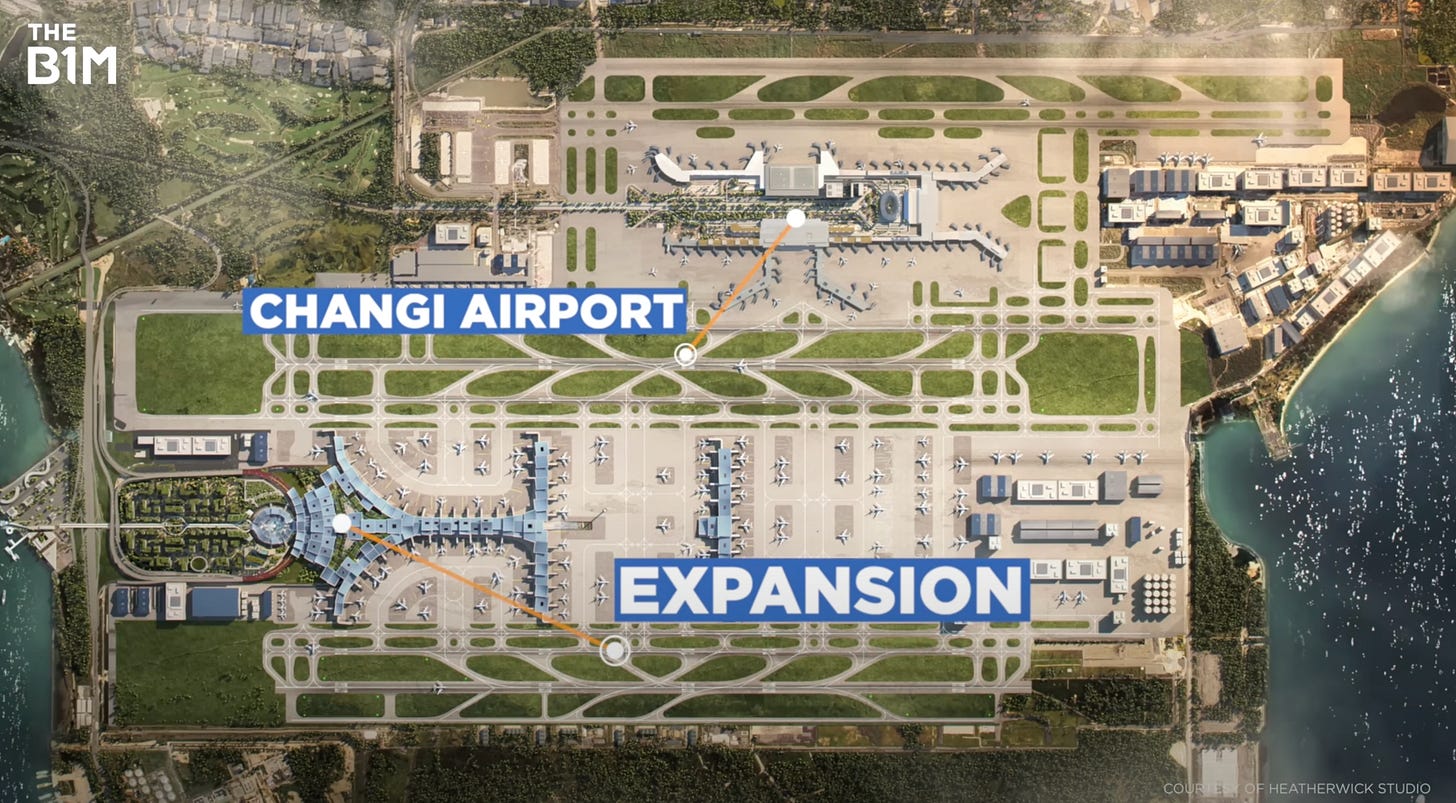
This issue of SatPost is brought to you by Bearly AI
Are you looking for a no-logging, encrypted and anonymized AI chat tool?
Then try the Bearly AI research app, which provides an easy-to-use UX for leading models from OpenAI, Anthropic, xAI, DeepSeek, Gemini and more.
While some AI providers keep chat logs indefinitely even after a user deletes them...Bearly AI has a default no-logging policy and user chats are encrypted while requests to LLM providers are completely anonymized.
If you’re looking for AI chat privacy, get access to leading LLMs and try one month FREE of the Pro Plan using the code BEARLY1.
Nvidia *Intends* To Invest $100B Into OpenAI
There’s that incredible scene in the mockumentary This Is Spinal Tap when the guitarist shows off his amplifier by turning the volume knob “up to 11” (because the dial at 10 isn’t loud enough).
As it relates to AI hype cycle, some of you may have foolishly believed that Softbank’s $40B investment in OpenAI earlier this year was an 11 on the dial. Nope. That was closer to a 7 or an 8. The knob only officially hit 11 last week with the announcement that Nvidia “intends to invest up to $100 billion into OpenAI”.
Now, the words “intends” and “up to” are major qualifiers but do make sense because:
Jensen isn’t Venmo-ing $100B into Sam Altman's checking account next week.
Rather, OpenAI plans to deploy 10GW of Nvidia systems (equivalent to 4-5 million GPUs) and will receive $10B for each 1GW it builds out ( by one estimate “every $10 billion Nvidia invests in OpenAI, the startup will spend $35 billion on Nvidia chips, according to an analysis from NewStreet Research”).
The cash will be used primarily to lease Nvidia chips (Nvidia will bear more of the asset depreciation risk).
The first tranche hits in 2H 2026 and it will take a number of years to build out all these data centres.
This financing structure is meant to prevent dilution of existing investors, per CNBC:
The initial $10 billion tranche is locked in at a $500 billion valuation and expected to close within a month or so once the transaction has been finalized, people familiar with the matter said. Nine successive $10 billion rounds are planned, each to be priced at the company’s then-current valuation as new capacity comes online, they said.
If Nvidia closed the full $100B right now, that would be 20% of OpenAI’s current valuation.
A guy I know that owns 1% of an SPV of an SPV of an SPV that owns 0.1% of OpenAI would not be happy with such rapid dilution. However, Nvidia investing over time is more palatable for the existing OpenAI cap table and matches up well with the chipmaker’s sales cycle (the $4.5T firm currently has ~$50B cash and is generating free cash flow of $15-20B each quarter).
Let’s assume OpenAI builds out the 10GW over the next decade. Each successive $10B investment by Nvidia will receive a smaller slice of ownership as long as OpenAI’s valuation goes up (the first $10B will be for 2% of the equity).
M.G. Siegler did some napkin math and thinks OpenAI in the early 2030s could be “nearly [33%] owned by Microsoft, with SoftBank and NVIDIA taking up another roughly 25% combined” or about 12% each.
OpenAI’s non-profit arm is looking at a 20% stake, which would leave 22% for everyone else (including Sam and potentially even Elon based on how his various lawsuits shake out, since he was the first money into OpenAI in 2016).
The popular reaction to the deal was captured in this post by Sully Omarr:
so let me get this right:
Oracle says Openai committed $300B for cloud compute → oracle stock jumps 36% (best day since 1992)
Oracle runs on Nvidia GPUs → has to buy billions in chips from Nvidia
Nvidia just announced they’re investing $100B into openai
Openai uses that money to... pay oracle... who pays Nvidia... who invests in Openai
So much circular and definitely feels bubbly. It’s worth noting that many of the Big Tech players have been paying for their GPUs with free cash flow but have had to tap debt markets as their capex spend goes through the roof.
Debt means that the AI race is entering a new (and riskier) chapter.
I get the rationale for this $100B Nvidia-OpenAI partnership, though.
Nvidia is printing so much cash that it needs to find ways to deploy it. They recently announced a $60B share buyback. That’s one way. Tossing $5B into Intel soaks up some cash. $900m to acquihire the CEO of AI hardware startup Enfabrica soaks up a bit less. This OpenAI deal — which helps to ensure the largest AI consumer platform in the world (700m+ users) has access to compute — is soaks up a lot more. On top of that, it owns 7% of $60B AI cloud provider CoreWeave and has invested in Elon’s xAI.
On a recent episode of the BG2 podcast, Jensen said he views the potential $100B outlay as more of an investment because he believes OpenAI will be the next “multi-trillion dollar hyperscaler” to compete with Microsoft Azure, Amazon Web Services and Google Cloud. Nvidia is already an “AI infrastructure partner” with those other cloud giants as well as helping to build xAI’s massive data centres.
Meanwhile, OpenAI needs to access as many pots of money as possible. It’s contracted $300B with Oracle (who will happily take the business) but currently only has $13B in revenue (although its inevitable ads business will help boost that number).
Will the AI hype cycle continue? A major point that Jensen’s been making is that the market size for inference will be 1,000,000,000x larger than the original ChatGPT because of the reasoning tokens. That forecast is also an “11” on the dial but is consistent with the industry’s attempts to make “agentic AI” happen (on a very related note: OpenAI released a product called “Pulse” that is like a personal assistant who combs through all your chats and comes up with ideas or questions to advance your goals while you sleep and drops you a summary in the morning).
How you feel about that statement probably correlates well with how you feel about the overall bubbly-ness (this also applies to your feelings about Sam Altman’s related blog post “Abundant Intelligence”, where he says he wants to eventually deploy 1GW a week because he doesn’t want the world to have to choose between “how to cure cancer” or providing “customized tutoring to every student on earth”).
Either way, the biggest loser in the deal was investment bankers, who look to make 0.0000% from the potential $100B partnership:
Altman and Huang negotiated their pact largely through a mix of virtual discussions and one-on-one meetings in London, San Francisco, and Washington, D.C., with no bankers involved, according to people close to the talks who declined to be named because they weren’t authorized to speak publicly on the matter.
Just old-school negotiating right there. A “mix of virtual discussions” and “one-on-one meetings” could also describe that time I messaged MJFan76891 on Craigslist and met him at the Starbucks three blocks from the subway station to buy a pair of used Air Jordan 11s (Space Jam Edition)….except my deal was 3-figures while theirs was 12-figures.
Until the 10GW is fully deployed, the biggest winner so far is the leather jacket industry:
iPods, Yondr and Classroom Smartphone Bans
The banning of smartphones in the classroom has to be some of the lowest-hanging fruit in the educational world.
There have been some studies showing that cell-phone bans only have marginal effects on the student’s wellbeing and classroom performance…but, c’mon, this is just pure common sense.
Every single person reading this email has had a handful of moments on a social app doing the “pull-to-refresh” like a pigeon in the Skinner Box looking for that next hit of sweet sweet dopamine. The prefrontal cortex — responsible for decision-making, planning and higher-order behaviour — isn’t even fully developed until we’re 25. Hell, I make 8-9x decisions a week that make me question whether my own prefrontal cortex is fully developed.
I do NOT want my kid with a smartphone (or around people with smartphones) in a classroom environment.
Of course, smart phones in the classroom are a terrible idea. Terrible and a lot of countries have smartly instituted a ban or partial ban including Australia, China, Italy, France, Brazil, Canada and the US (20 states have a complete wireless communication ban).
Aside from the students and teachers, there are two other major winners of this trend.
First is Yondr. You’ve definitely seen these things: a grey fabric pouch with magnetic lock that can only be opened with a special unlocking thingy.
Launched in 2015, Yondr sold 25,000 units and was popularized by Dave Chappelle, who didn’t want the audience recording his sets.
According to the Wall Street Journal, sales were projected to hit 10 million units in 2024. At $30 a pop, Yondr was minting $300 a year with schools now accounting for 70% of all purchases.
The margins for Yondr must be crazy.
Literally, fabric and some magnets. Although, they probably also spent a ton of lobbying education departments (which, again, I’m happy about).
Second is the iPod resale market. Due to the wireless device school bans, kids are looking for other devices to use for dicking around and the r/iPod subreddit has exploded with Gen Z and Gen Alpha kids swapping intel on the best MP3 players.
Some old iPods are being relisted on eBay at $500+. Meanwhile, the New York Times recently wrote about kids using iPods and Walkmans…and the Redditors are worried that the prices will soon blow up (there’s been a clear bump in Google searchers for “iPod Nano” and iPod Classic”).
Quick reminder: the iPod peaked at 40% of Apple’s sales in 2006 (~$8B of $19B), which was a year before the launch of the iPhone. As someone astutely highlighted on X when I shared this iPod story: “idk which Apple exec needs to hear this but next year is the perfect time to re-launch a 25th anniversary clickwheel iPod…would do insane numbers”.
Links and Memes
TikTok US Sold For $14B…to a group of investors. Oracle, Silver Lake and Abu Dhabi’s MGX will own 45%. ByteDance will continue to own 19.9%, which is just under some law that says something about 20% foreign ownership. Existing investors will keep 35% including General Atlantic, Susquehanna and Sequoia.
The Murdoch family might come in. Same with Michael Dell.
A first huge caveat is that the Chinese government has yet to say anything about this deal even as President Trump has done his go-to Executive Order signing move (remember, it was his Executive Order nearly 5 years ago to ban TikTok that started this whole “will TikTok continue to exist” song and dance).
A second caveat is that $14B is an absurd price tag. My initial reaction to that figure was that the investors had bought TikTok off of Temu. ByteDance itself is worth $300B+ and does ~$50B in sales. TikTok is probably 20% of that putting it at $10B. A reasonable multiple between 5-10x puts the market value at $50B to $100B.
But this is obviously not a market deal. It’s rightly framed as national security, which is why I always thought America should ban it (there are 150m users in America and the propaganda potential is absurd if controlled by peer competitor nation state). God, I hate TikTok so much…but will concede that this 67-second clip is among the human race’s greatest artistic achievements.
Anyway, a few more details trickled out which make the $14B price tag a bit more reasonable:
TikTok US will license ByteDance’s algorithm (not clear who is actually in control here...apparently, Oracle will train US data on that algo)
ByteDance is slated to get 50% of TikTok US’s profit on top of 20% of revenue for licensing the algo.
TikTok US can’t enter non-American markets.
FYI. These details are all maybes until an official confirmation from the Chinese government. WHO KNOWS!!?!?!?!??!
Whatever ends up happening with TikTok, it has unfortunately perfected the most addictive social media content format: short-form videos, which every other major app has copied and inserted directly into our retinas (I wrote about this in “The Dorito-fication of Media”).
I have resisted the retina insertion of short-form videos but fully understand that my text-first preference is a tiny slice of the market…and will only get smaller because…
***
…Meta Goes Full AI Slop: After spending billions on AI talent for its Super-Intelligence Lab, Meta’s first product is called Vibes. It’s built on top of Midjourney and is short-form video format combined with AI-generated content. My first reaction was “this is Cocomelon for boomers”, which was pretty mild compared to other takes:
“Guys it is very important that you resist Vibes. Disable your parents’ phones if they tell you they’re using Vibes. Make fun of your friends relentlessly until they stop using Vibes. Fire employees caught watching Vibes. We’re better than this. Cmon.” (Packy McCormick)
“should’ve called it Trough, the kind pigs eat their slop out of” (Sebastiaan de With)
“kinda ironic how this launch basically kneecaps meta’s ai recruiting. in some ways it just means the comp premium goes up. in smart circles there are social penalties for choosing one logo over another, & right now meta sits on the wrong side of that table culturally. it also kinda cements the perception that meta is chasing engagement gimmicks rather than setting the intellectual agenda. so instead of meta ai evoking respect like openai or deepmind, it evokes… content farm.” (Signull)
***
Some other links for your weekend consumption:
Leonardo DiCaprio has been hitting the podcast circuit…to promote Paul Thomas Anderson’s new film One Battle After Another. Honestly, it was a bit jarring seeing Leo in a podcast. Him, Pitt and Cruise are the last of true OG film stars and the pod format doesn’t seem befitting for such a screen legend. Oh well. He did tell the New Heights podcast that his first agent told him his screen name should be Lenny Williams, which is effin hilarious. Lenny Williams would have had the film career of Rob Schneider if that was the case.
Paul Thomas Anderson has some great old school interviews…and here’s one of him talking about why he dropped out of NYU film school (on the first day, a professor said “If anyone is here to write Terminator 2, walk out.”
Linkedin recruiters are using AI to spam candidates…so someone figured out an ingenious prompt injection in their online bio to mess with automating AI recruiting tools.
The most valuable gambling company in the world is Flutter Entertainment…the $50B firm passed Las Vegas Sands ($37B) in recent years. The flippening is a microcosm of how online sports gambling has overtaken in-person casino. Flutter owns FanDuel, Sky Betting & Gaming, Sportsbet, PokerStars and Paddy Power among others. On that note, Joe Pompliano has a good deep dive on FanDuel’s business.
A massive hack took down Jaguar Land Rover (JLR)…which is the UK’s largest car manufacturer ($24B sales and 400k+ cars a year). Since the end of August, it had to stop production because its IT network has been turned off and is losing $5m+ a day. The company employs 33k people in the UK and its suppliers are at risk of bankruptcy. Indian conglomerate Tata owns JLR and the IT firm that is overhauling its backend. The Guardian has a solid breakdown of why it’s such a mess.
The human circulatory system…could use some better wire management.
…and them wild posts:


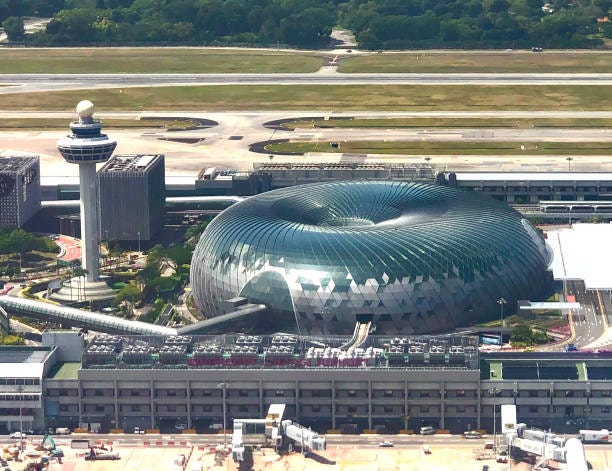
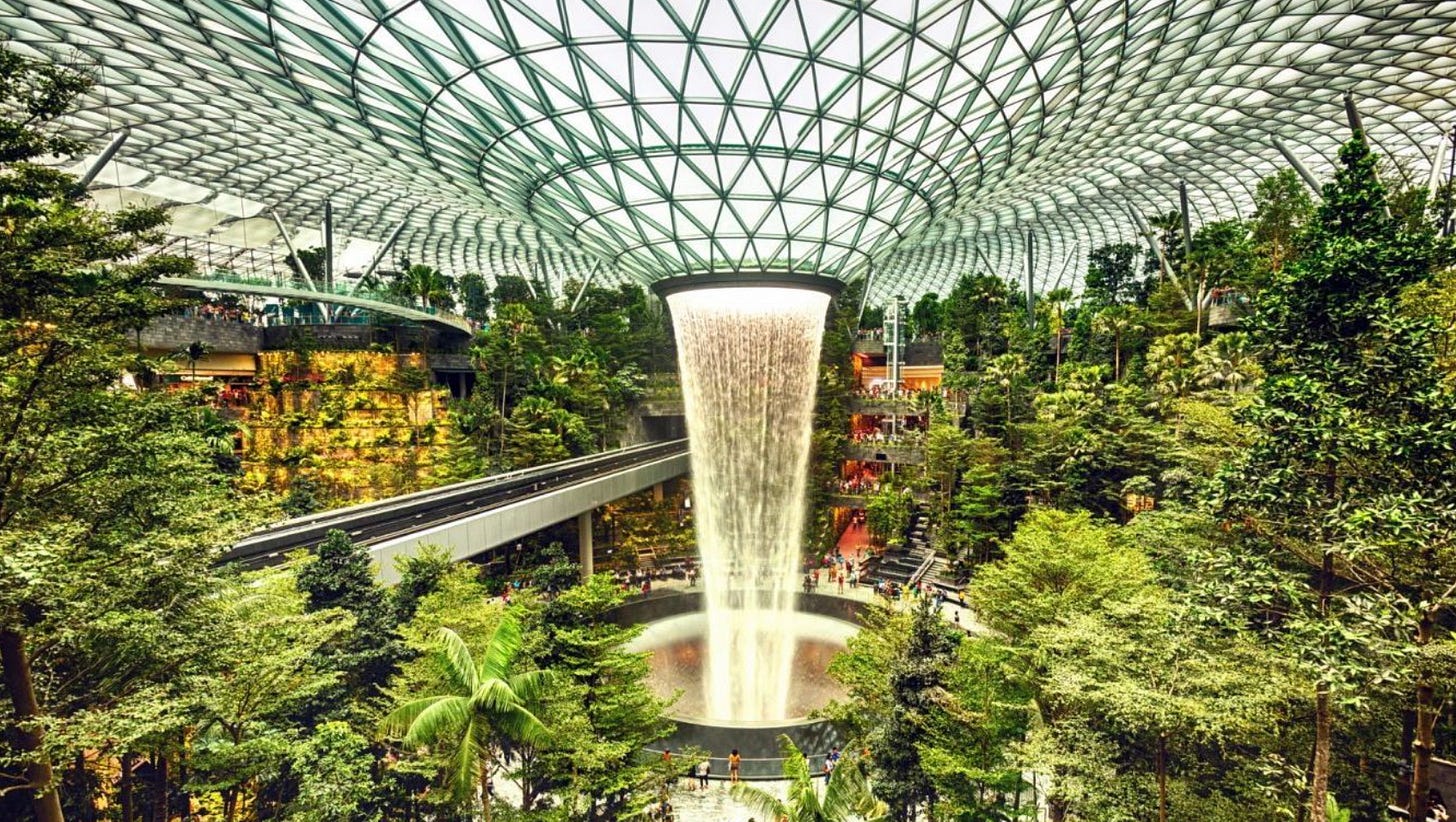
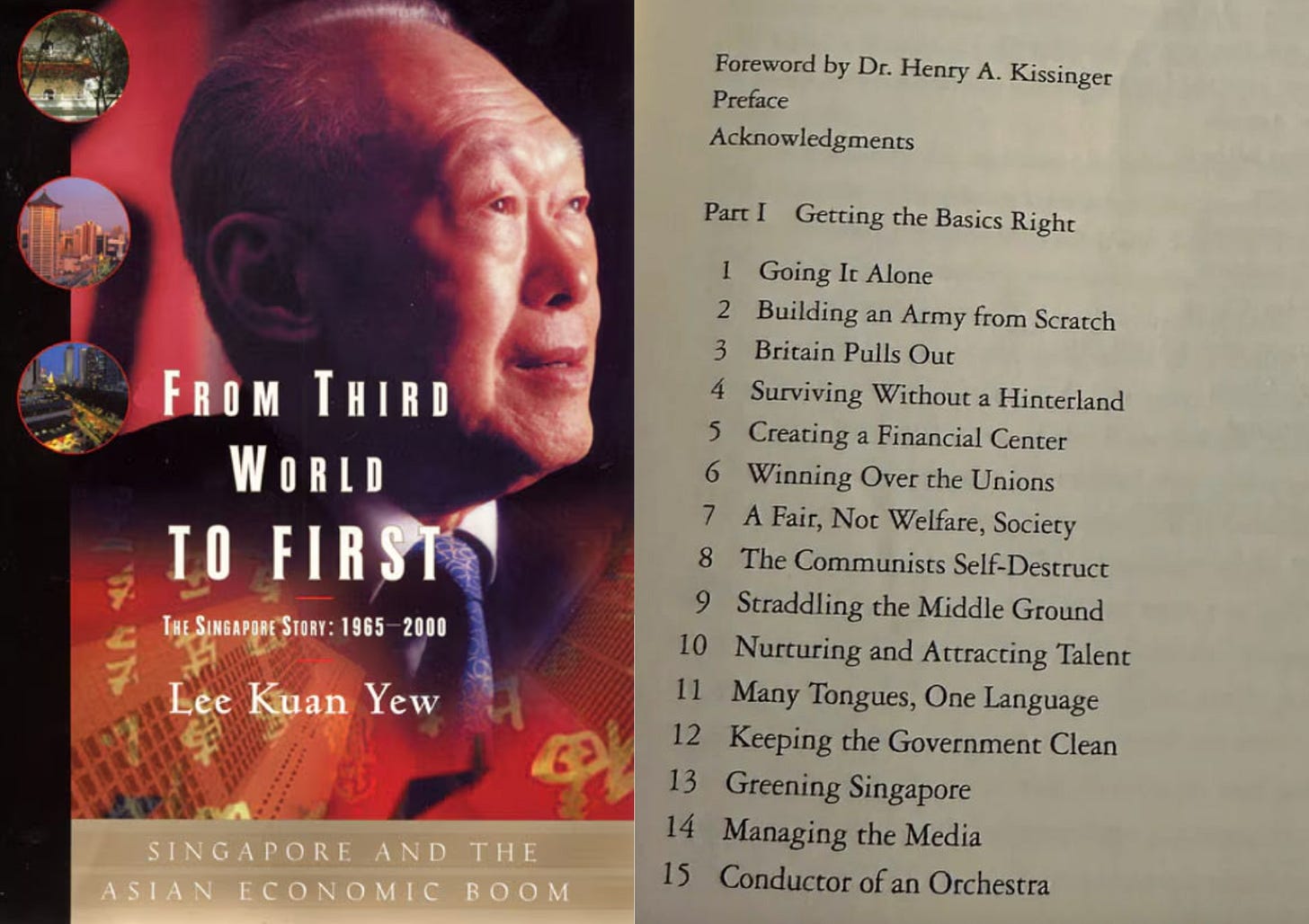
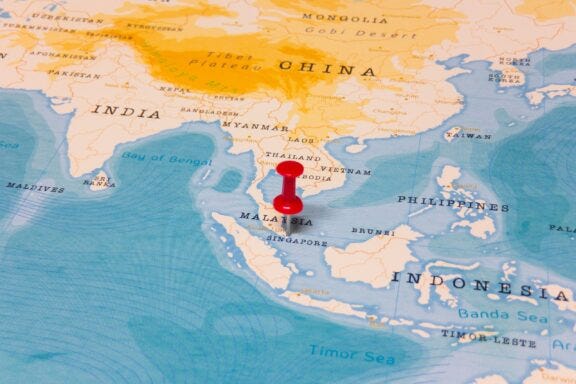
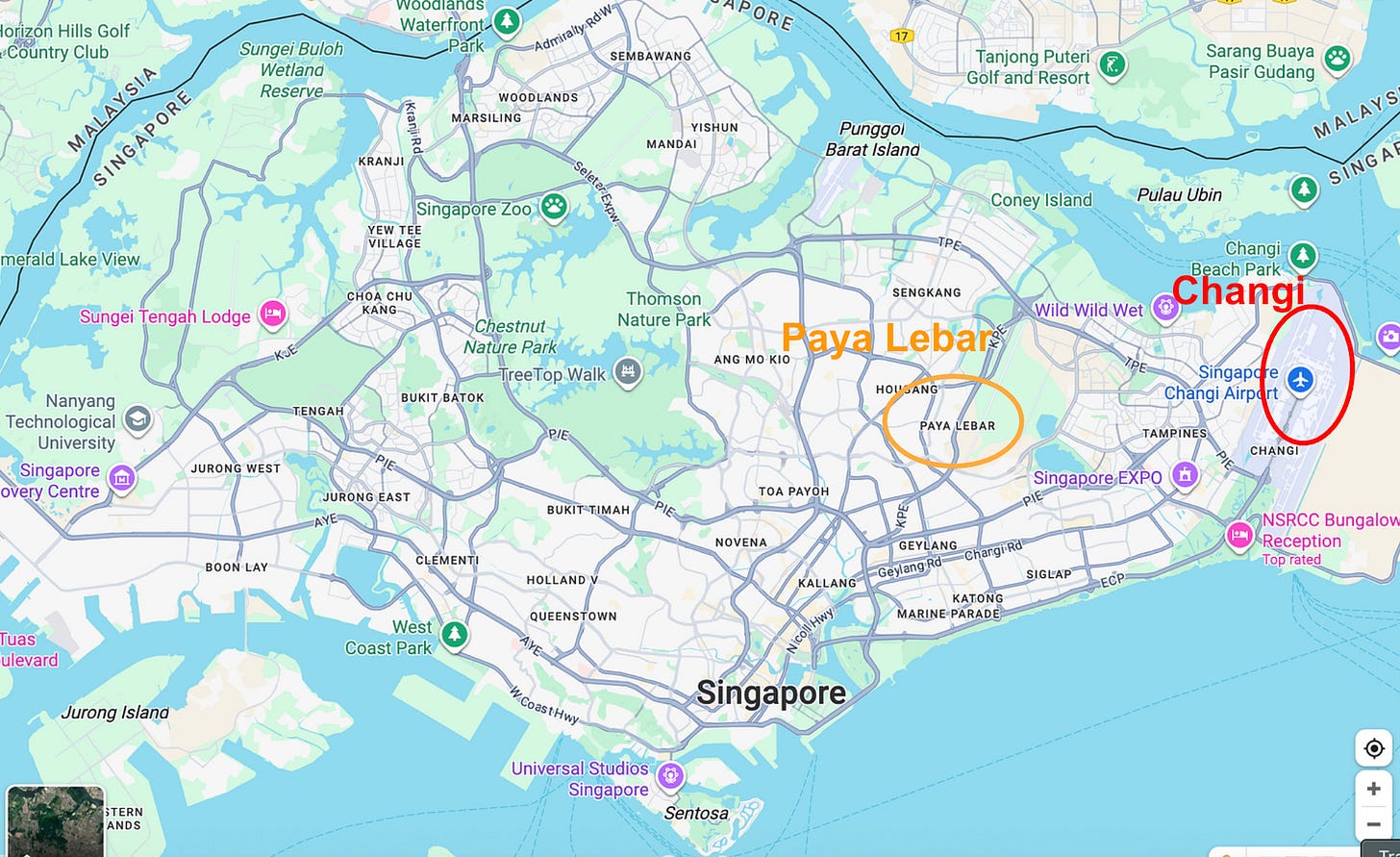
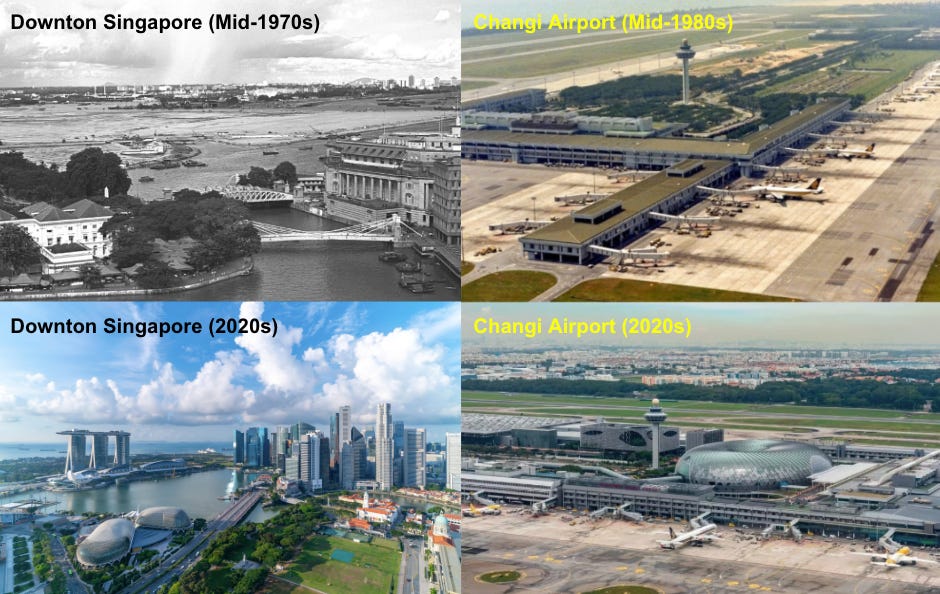
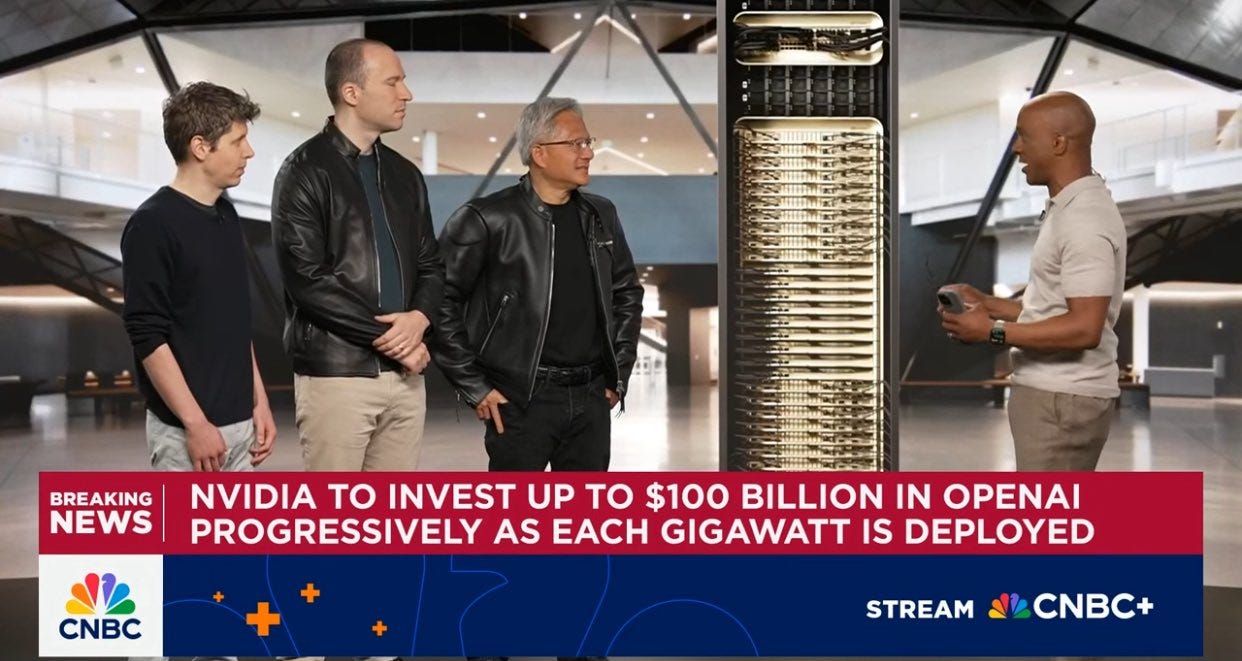
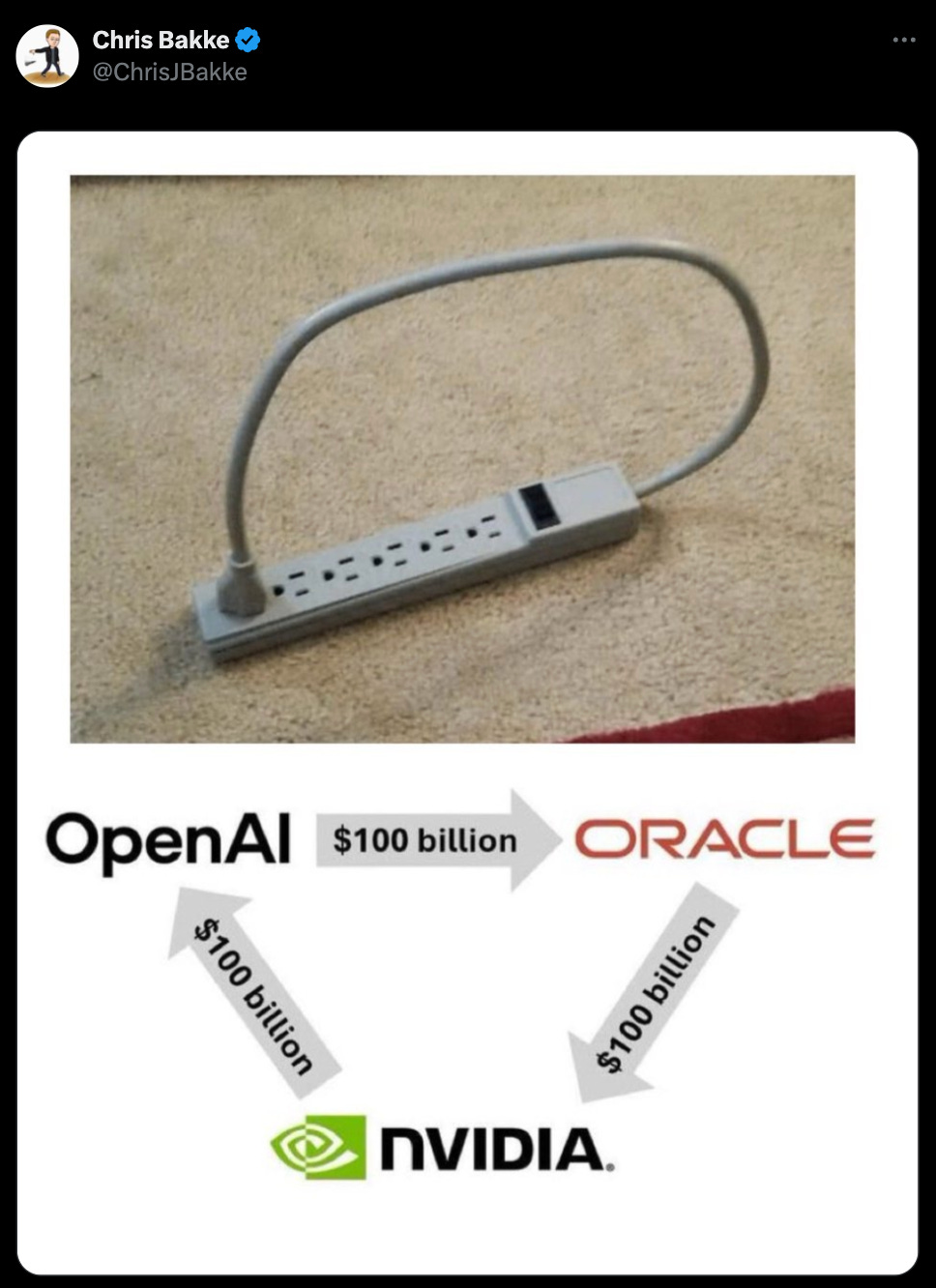
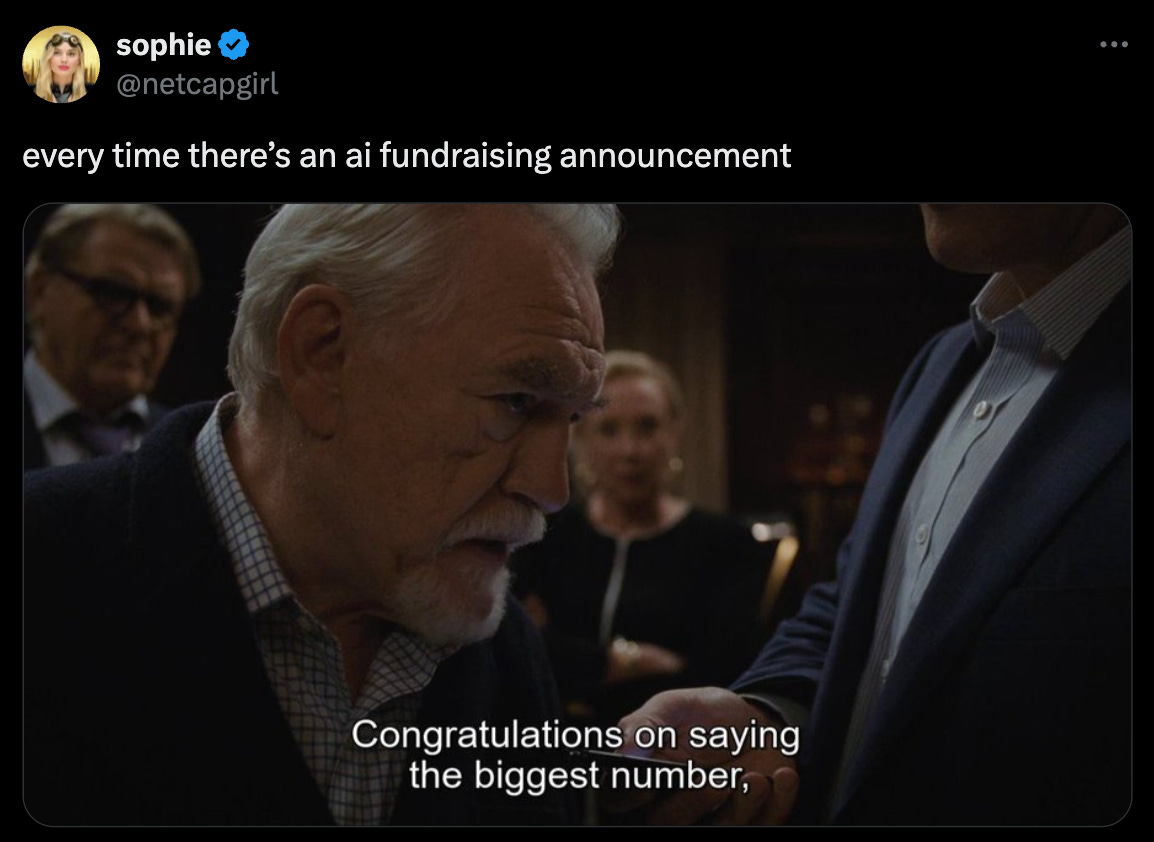

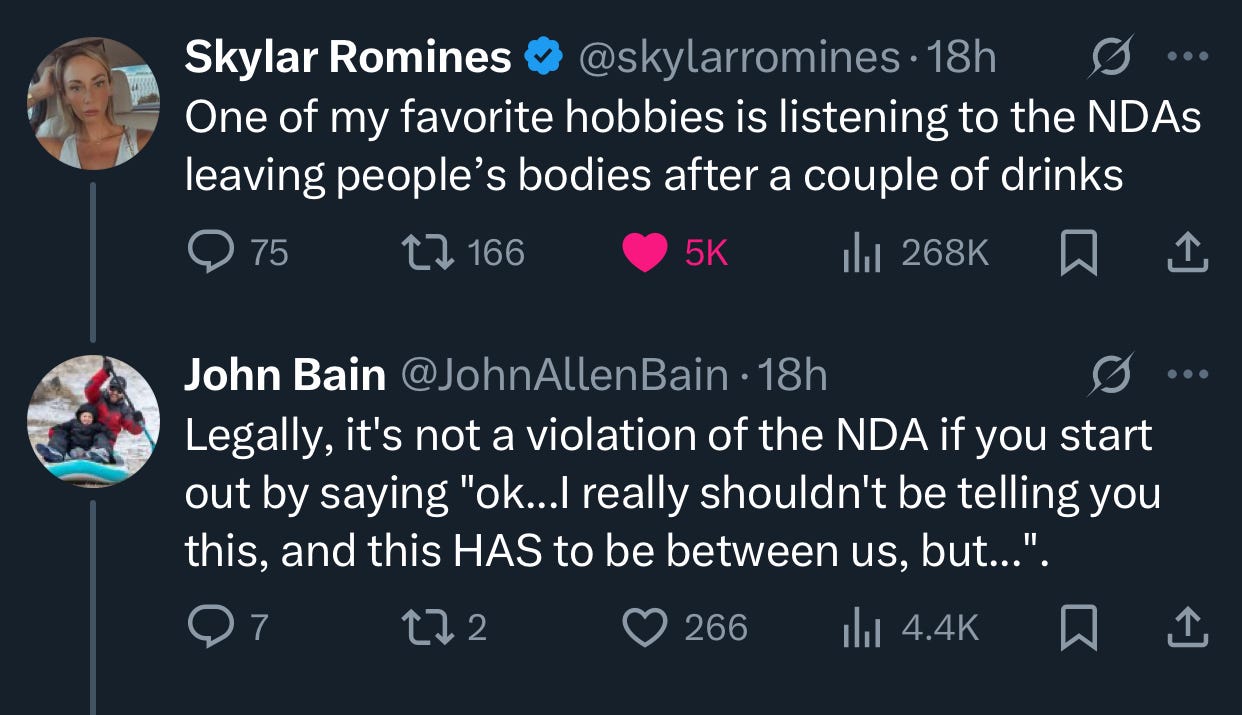


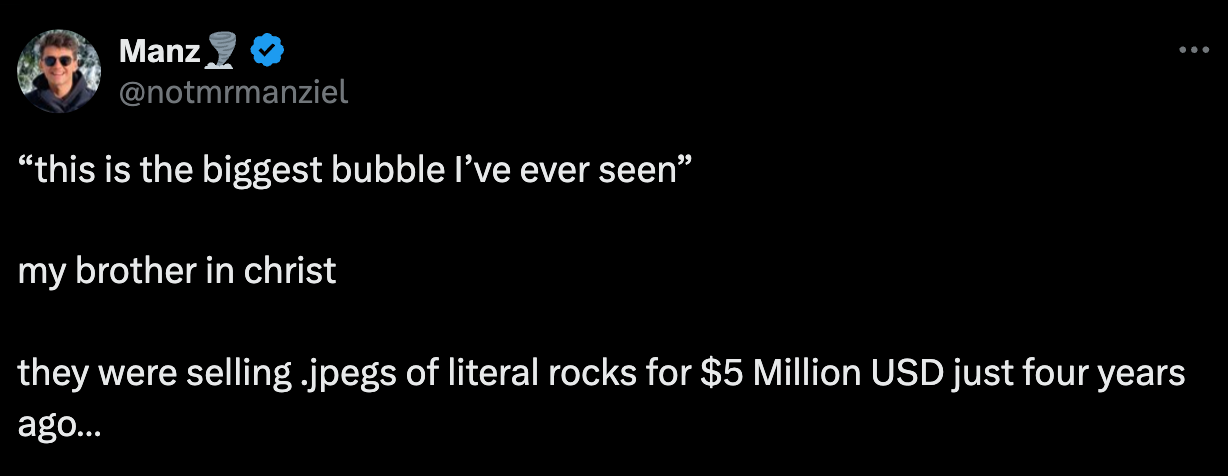
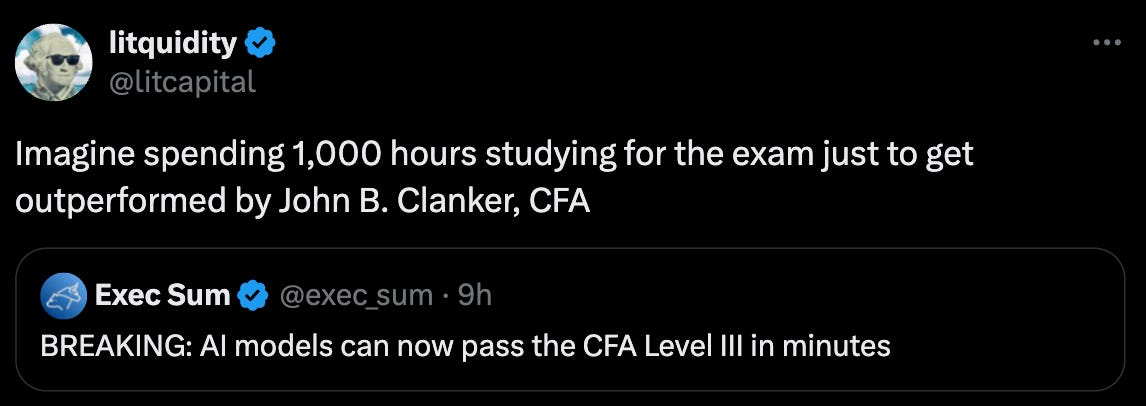

Great read, as always. LKY is one of the most admirable historical figures, but unknown to most people.